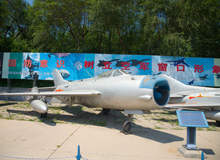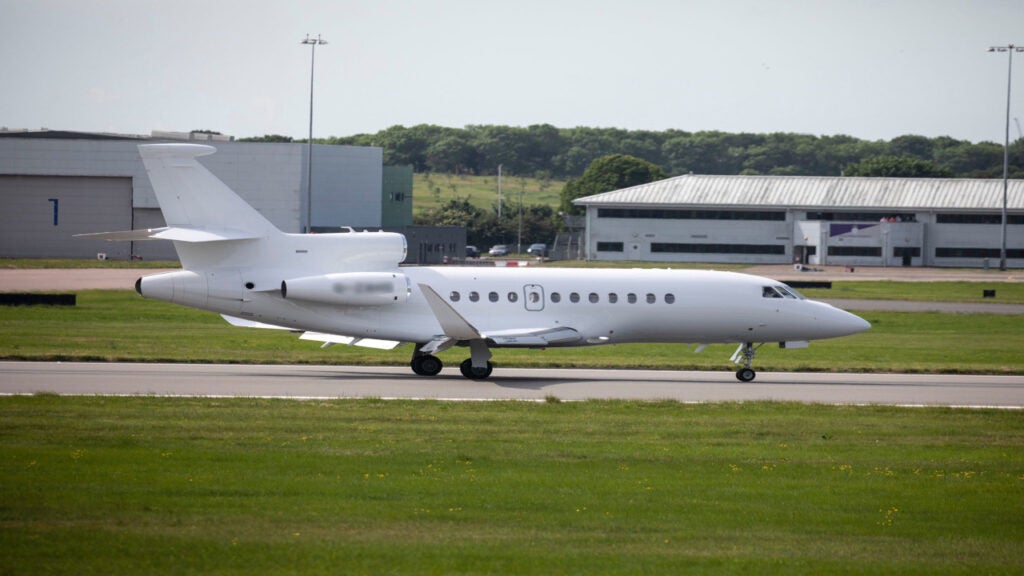
The J-6 (Jian-6) is a twin engine, fighter aircraft designed and manufactured by Shenyang Aircraft Corporation (SAC) of China. Its NATO reporting name is ‘Farmer’. The aircraft is built based on its predecessor, the MiG-19. The export version of J-6 is designated as the F-6 (Fighter-6).
The J-6 or F-6 is built principally to meet the requirements of the People’s Liberation Army Air Force (PLAAF) and People’s Liberation Army Naval Air Force (PLANAF). About 3,000 J-6s were delivered to various countries worldwide.
J-6 fighter variants
The J-6 has 10 variants designated J-6A, J-6B, J-6I, J-6II, J-6III, J-6IV, J-6IIIC, JJ-6, JZ-6 and BW-1.
The J-6A is an improved version of the original J-6 aircraft, also known as Type 59A. It is derived from Russian MiG-19P fighter and took its first flight in December 1958.
The J-6B, also known as Type 59B, is derived from the Russian MiG-19PM Farmer-D fighter aircraft. The maiden flight of the J-6B was accomplished in 1963.
The J-6I features a broad wing area, a WP-6A engine and took its maiden flight in 1966.
The J-6II is an advanced version of J-6I. This variant is fitted with 30mm cannons and air speed tubes. Its first flight was completed in March 1969.
The J-6III is an improved version of J-6II. It features three 30mm Type 30-1 cannons and a brake chute at the base of rudder. The maiden flight of the variant took place in August 1969.
The J-6IV is built based on its predecessor J-6III. The aircraft is equipped with two 30mm cannons and local ranging radar. Its first flight was completed in 1970.
The J-6IIIC is an advanced version of J-6III, built by Guizhou to operate in all weather conditions.
The JJ-6 is an improved trainer version of the J-6. This variant features two cockpit seats, an extended fuselage section and a 30mm cannon. Its maiden flight took place in November 1970. The export version of JJ-6 is designated as FT-6.
The JZ-6 is a reconnaissance aircraft fitted with a retractable camera in the fuselage aft. It is derived from the Russian MiG-19R aircraft and completed its first flight in July 1971.
The BW-1 is an advanced version of JJ-6. It is a fly-by-wire (FBW) testbed fitted with various test equipment by removing its rear seat.
This variant can be controlled both mechanically and electronically. Its maiden flight took place in November 1988.
Design
The J-6 or F-6 has been designed with a swept wing to break the speed of sound. It is semi-monocoque in structure and its wings are sharpened with blunt tips.
The tail fin of the aircraft is in oval shape and features a bubble canopy on the forward nose. The J-6 comprises a sealed cockpit cabin with ejection seats.
Development
China started to develop its own MiG-19 with the help of the Soviet Union in the early 1950’s. SAC manufactured a DongFeng-102 based on the Russian MiG-19P and MiG-19S in 1953. The DongFeng-102 took its maiden flight in September 1959.
The production of DonFeng-102 was cancelled due to quality issues and unsatisfactory performance.
Shenyang later began to develop a modern aircraft based on the MiG-19S in 1961.
The new model was designated as J-6 (Jian-6) and entered into operational service with the PLAAF in September 1964.
The J-6 is also exported to various countries including Albania, Cambodia, Iran, Iraq, Burma, Somalia, Sudan, Tanzania, Vietnam, Zimbabwe, North Korea and Pakistan.
DongFeng-103 is the Chinese version of the MiG-19P, developed by Shenyang and Nanchang. Its maiden flight was accomplished in December 1958. Hongdu Aircraft Industry Group later built the modern DongFeng-105 based on its MiG-19PM which is fitted with air-to-air missiles.
The production of DongFeng-103 and DongFeng-105 were terminated due to their disappointing performance. Guizhou Aircraft Industry Group (GAIG) restarted the production of the MiG-19P in 1974 to build the J-6A aircraft.
The retirement of J-6 fighters from the Chinese Defence Forces began in the early 1980’s. The aircraft were later retained until the 1990’s due to lack of funds for modernisation of PLA’s J-6 fighter fleet.
All F-6 fighters currently operating in the world were retired from service in June 2010.
Avionics
The J-6 aircraft had a range of communication and navigation equipment installed. The radar range finder identifies the enemy carrying armaments.
The radio altimeter installed in the J-6 displays the altitude at which the aircraft is cruising. It is also equipped with a beacon receiver, a magnetic compass, a gyro and a friend or foe transponder.
Armaments
The J-6 or F-6 is armed with three 30mm Type 30-1 cannons, which can fire munitions at the rate of 70 rounds per gun (wing gun) and 55 rounds per gun (fuselage gun). The aircraft has six hardpoints with three on each wing.
It can carry a payload of up to 250kg. The J-6 is fitted with PL-2 and PL-5 air-to-air missiles (AAM), anti-runway bombs, two unguided rocket launchers, and two 500l drop tanks.
Engines
Powered by two Liming Wopen-6A (Tumansky RD-9B) afterburning turbojet engines, the J-6 or F-6 was recertified for production in 1964. Each engine can produce 36.78kN of thrust afterburner.
The developer of WP-6 engine, the Shenyang Engine Factory, obtained the license in October 1961.
Landing gear
A tricycle type hydraulic retractable landing gear is fitted to the aircraft. It is integrated with dual brake KT-37 wheels of 660 × 200B size and 10.79 × 105 Pa (11 kg/cm²) tire pressure.
Performance
The J-6 or F-6 can climb at the rate of 180m/s. The maximum and cruise speed of the aircraft are 1,540km/h and 950km/h respectively.
Its range is 685km. The ferry range and service ceiling of the aircraft are 2,200km and 17,600m respectively. The aircraft weighs around 5,447kg and its maximum take-off weight is 10,000kg.




